Supplying the people of the world with sufficient food has been a constant issue ever since the population has begun to increase considerably. Now even movies are placing food shortage at the center of their Sci-Fi genre. Homemade food might be a possible working answer, people all over have resorted to such a solution in the last years. But how to go about more sustainable food systems?
“Aquaponics, is a food production system that combines conventional aquaculture (raising aquatic animals such as snails, fish, crayfish or prawns in tanks) with hydroponics (cultivating plants in water) in a symbiotic environment. In normal aquaculture, excretions from the animals being raised can accumulate in the water, increasing toxicity. In an aquaponic system, water from an aquaculture system is fed to a hydroponic system where the by-products are broken down by nitrogen-fixing bacteria into nitrates and nitrites, which are utilized by the plants as nutrients. The water is then recirculated back to the aquaculture system.”
© 2025 Home Design, Garden & Architecture Blog Magazine. All rights reserved.

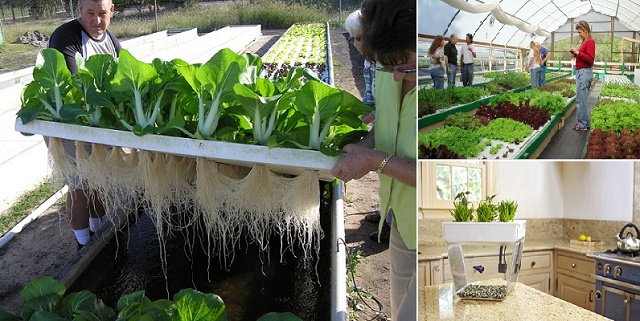







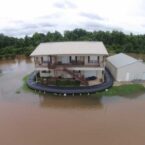

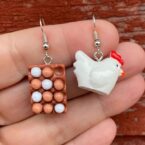

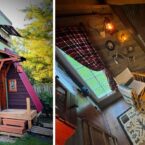
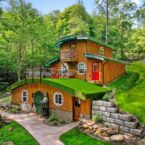

Good intro to what aquaponics is and it’s potential. Didn’t see a lot of helpful info on building a system. For folks looking to build one, check out this podcast: podcast.brightagrotech.com
Hey guys, Dr. Nate!
I was curious if you have any in-turn slash volunteer slash free labor positions available at Bright Agrotech? I was pondering whether or not to attend Nelson and pade class / seminar series but I have the distinct feeling that is a sales pitch as much as a teaching opportunity. I have read, listened, watched and absorbed any possible peice of info out there and feel that I have a really well rounded grasp on most aspects of aquaponics but you can never stop learning new things! Hope to hear back from you all.
Cheers.
Steve
[email protected]
So, question….are the plants still considered organic if they’re in plastic bins with chemicals? I’m trying to work out a way to grow completely organic vegetables easily for my family. Any feedback would be great, thank you!
Ich Glaube im Bio-bereich bleibt ihnen nur das Gewächshaus. Ich vermute das die Biomasse was sie zum Düngen ja benötigen das Wasser zusehr verunreinigt und auch zuviel N freisetzt.
Hi dee, being labeled as organic is based upon a number of factors, i.e plant (and in this case, animal) nutritional supplimentation, production, handling, environmental factors of pest control, media or non-medical factors, filtration, fertilization to mention any few. Aquaponics in it’s purest form would can be a closed loop, organic process. The only input could be limited to an organic fish food. Fish excrete waste, solid waste is filtered out, ammonia (created by product of waste and gills) is treat by naturally occurring beneficial bacteria which turn ammonia into nitrites then nitrates which is basically plant food. Water is returned to a holding tank and then pumped back into fish tank good as new.
There are a number of different systems that you can use, dws, nft, ebb and flow media beds, so hybrids and Frankenstein styles ands well. I would and so so add that my description up top is extremely basic. As for most things you can get as technically advanced as you wish, i.e, organic iron, magnesium, calcium additives, monitor ec, pH, ppm, temp, humidity, nute uptake, specific crop and breed requirements like if you pick talapia as your fish stock, then it may not make sense to have lettuces in your system…lettuce likes cooler water and conditions but talapia and loss re more adapted to warm water. Like I said earlier, it’s as complicated as you want to make it!
Pardon any errors in spelling or grammar. .. I’m pecking this out on a tiny tablet!
Everything is a chemical. Water is a chemical. I think you mean toxins. If you are against plastics you could probably use wood barrels or in a hollowed out log? Other than that, you could just do it in dirt.
What cost and size are you looking for in a container? I might have a supplier.
good question Dee, But the idea is the fish feed the plants.
Use glass or some other safe container. Plastic is cheaper and bigger. Also inert for the most part. Won’t react to the water and other chemicals that will noticeably harm the plants. Metal containers might.
Metal will harm the fish.
Yes if you take out the the soil component then one just eliminated the pest that thrive on gardens grown from soil. Green Houses and Marigolds help keep air fling pest in check. The plants help the fish live healthy lives because the plants feed on the bad bacteria that the fish produce from feeding them and so that makes a perfect contained Eco system. peaceofminesurvival.com/AQUAPONIC_GARDEN.php
Dee, I don’t believe there is any chemicals involved. The nitrates and nitrites they are talking about are byproducts of the excretions (such as poop) from the aquatic species, which are therefore turned into food for the plants. Its an ecosystem. You shouldn’t need to put any sort of chemicals in this at all.
I think you folks are missing the point that Dee is making. Dee is wondering if by using a PLASTIC container (which is made up of chemical) if that can be considered non-organic. Phil: plastic is NOT inert! What are you talking about?! Most of the small fish tank (inside your house) aquaponics setups that I see on the internet use something like Rubbermaid containers as their grow beds. I cringe when I see this. Plastics DO leach chemicals. Most of this stuff is made in China. Containers are often constructed out of some of the cheapest plastics out there. Plastics leach chemicals out over time. Whatever you put in the water of your AP system will go into the fish and also be uptaken into the root system of your plants. Personally I would not use Rubbermaid nor Sterilite containers to grow my plants in. That being said, there are food safe containers out there. My AP systems are based on FOOD GRADE plastic containers that have been previously used with liquid sugars and other food stuff. I use those big 50gal blue barrels. Remember, anything you put in your soil/water/plants will end up in your body.
I agree, re plastics. The major tomato hothouse in Maine uses ripped up tires to grow in! We stopped buying them. That is not organic to me!
why not just plant in the earth like it naturally dose on its on people are so worried about organic but dont yet under stand plants dont need us to thrive they do well on there fucking own
I have a large natural sprinfed pond on a couple of acres…any info on how to develop aquaponics in a natural water feature.
Evelyn,
Yes. do a Google search for fish farms, crawfish farms, etc. Also search “outdoor aquaponics.”
Hi,
I am shocked at how many big fishes are in that small barrell. That is very cruel !! You may have thought it a good idea to use fish but you need to be ethical in how you treat them — even if you will eventually kill them and eat them.
Thank you,
Maha Raman
I agree Maha! That looked like the fish equivalent to caged and stacked chickens. 🙁
Very well said….I use food grade IBC totes
Hi,
Could you please put me though on how to start an aquaponic farming ?
You can use worm castings, buy on Amazon, make what is called a tea and use it to feed and water your plants. 100% organic animal by product.
I recommend food grade plastics and plenty aeration. The main dangers are from anaerobic bacteria and nitrated waste water. If your a wizard at monitoring waterchem and compost teas, it is possible to have very healthy aquaponics plants with very natural inputs that promote healthier food and don’t harm the environment. Most people have to add a few purchased amendments, but those can be found OMRI certified, and sometimes “organic” in the traditional sense.
Ive always been so interested in aquaponics, it’s such a neat system. Thanks for sharing!